After the lavish wedding, Mong couples begin their new lives with heavy debts. A new way of life knocks on the door, dispelling the old, backward complications. Life after marriage in the Mong ethnic group is gradually changing.
 The bride and groom in Pu Nhi commune (Muong Lat) wear traditional costumes of the Mong people.
The bride and groom in Pu Nhi commune (Muong Lat) wear traditional costumes of the Mong people.
Dizzy because...thanks
No one knows since when, the weddings of the Mong people have been arranged like a sad refrain. According to the concept of “a buffalo does not marry a cow”, the Mong people must marry other Mong people, many young men and women still in their prime have had to get married, entangled in incestuous marriages, following many sad consequences. And the story of diseases caused by genetic mutations has devastated many homes in the remote highlands.
Mr. Lau Minh Po, former Standing Deputy Secretary of Muong Lat District Party Committee, recounted the story with sighs of disappointment. He said that the situation of early marriage and incestuous marriage is superficial and known to many people, but the weddings of the Mong people in Muong Lat in the past were still cumbersome, wasteful, costly, and even had many funny stories. Such as the story of organizing an overnight wedding, having a lavish meal, and the groom having to bow to express gratitude...
The thing is, when coming to the bride's house to pick up the bride, receiving a wedding gift, regardless of size or value, the groom must kneel down and bow to express gratitude. Receiving a blanket, he bows once, a mat, a scarf... but receiving money in an envelope, the groom must bow twice, whether it is 10,000 or 20,000 VND. If the bride's family is poor and has few gifts, the groom will not have to suffer from back pain or knee pain, but if the family is well-off, the groom will have to kneel down and feel dizzy. And even now, when recounting it, many Mong men in Quan Son, Muong Lat still remember the wedding day clearly, as a bittersweet memory.
Mr. Lau Minh Po was the same, although that story happened more than 40 years ago. “After I knelt down to thank him, when I stood up, I could no longer feel the direction, sweat poured out like a shower, I had to lean my hand on the wall of the house and stand for a long time. No one did not feel dizzy when kneeling down to thank him. Some people knelt down and stood up, but their legs were so weak that they fell and hit their heads on the wooden wall, causing them to bleed,” said Mr. Po.
It is natural that when the wedding takes place, the Mong groom has to be busy for many days preparing, then entertaining friends and guests noisily on the wine tray for many days. When picking up the bride, they usually have to go to the bride's house from around 3 pm to perform the rituals all night long, then drink and party until the next afternoon. After going through that "gate", the body is tired and the eyes are tired, when it comes to kneeling to thank, the grooms feel dizzy, have ringing in their ears, and even fall to the ground, which is understandable.
The story about the complications in weddings among the Mong people, according to Mr. Lau Minh Po, is also about the lavish feasts that are held for relatives day and night. Young people gather to "compete" in drinking alcohol, then quarrel and fight, and relatives have to intervene. There are cases of disorder due to weddings, so serious that the police have to intervene. Life in the green forest, the whole family works hard for years to save up for a buffalo or a cow as capital, then "leaves" because of the wedding. And then the story comes back to the word "poverty". Many Mong couples get married, but before they see happiness, they have a huge debt...
Movement for change
The campaign for the Mong people to practice a civilized lifestyle in weddings and funerals has been organized and implemented by the Party committees and authorities of the Mong people's regions for many terms. Each locality has its own way of doing things, but they all have in common the strong participation of the Party committees, authorities, the Fatherland Front, socio-political organizations and border guards. In particular, the exemplary role of cadres, party members, prestigious people and clan leaders is promoted.
Quan Son district has 3 Mong ethnic minority villages living along 12km of border, in 2 communes of Na Meo and Son Thuy with 217 households and 1,058 people. The work of propagating and mobilizing people to practice civilized lifestyles in weddings and funerals has been promoted since 2017 after Resolution No. 07-NQ/HU of the District Party Committee on strengthening ideological work, quickly changing backward farming practices and living habits among the people; promoting the good cultural identity of ethnic minorities, in order to promote socio-economic development, soon making Quan Son a well-off district. In this resolution, Quan Son District Party Committee pointed out manifestations of backward ideology, production practices and living habits to focus on changing and eliminating. These include the cumbersome, wasteful and costly situation in weddings and funerals; not seriously complying with the law and implementing village conventions; drinking alcohol, causing public disorder... Next, in implementing Conclusion No. 684-KL/TU dated December 10, 2021 of the Provincial Party Committee Standing Committee on strengthening mass mobilization work in the Mong ethnic minority area of Thanh Hoa province, period 2021-2025, the Party committees and authorities of Quan Son district have deployed the construction of skillful mass mobilization models, promoting the vanguard and exemplary role of cadres and party members, especially the heads of Party committees and organizations, promoting the role of prestigious people and heads of Mong ethnic clans to mobilize people to change their thinking and actions.
For example, in Mua Xuan village (Son Thuy commune), the Party cell, the village management board, commune cadres, border guards and clan leaders went to each house to propagate and mobilize people to practice a civilized lifestyle in weddings and funerals, as well as actively develop the economy and reduce poverty sustainably. The main targets are young people preparing to get married and heads of households. Secretary and Village Head Sung Van Cau said: “Up to now, weddings in the village are organized simply, without lavish meals for many days. This has been included in the village covenant for each household to implement. The situation of incestuous marriages no longer occurs.”
 Officials of Muong Ly commune (Muong Lat) and border guards propagate to Mong people to practice civilized lifestyle in weddings.
Officials of Muong Ly commune (Muong Lat) and border guards propagate to Mong people to practice civilized lifestyle in weddings.
In Muong Lat district, the work of propagating and mobilizing people to practice a civilized lifestyle in weddings has received the active participation of cadres, party members, heads of Party committees, authorities, prestigious people and heads of Mong clans. Since becoming the Standing Deputy Secretary of the Muong Lat District Party Committee, Mr. Lau Minh Po has spent a lot of time at the grassroots level directly directing the work of propagating and mobilizing people to practice a civilized lifestyle. From 2020 to now, although he has retired, as a prestigious person, and knowledgeable about Mong culture, he has actively participated with the Party cell and the management board of the villages to go to each house to explain to the people. He explained each custom and ceremony in the wedding, advising which ceremonies should be kept and which should be abandoned to suit the new lifestyle. Among them, the story about the night wedding, where the groom had to kneel down and thank each person who gave him a wedding gift, should be abandoned... To him, the most important thing about a wedding is that the couple must be happy and not have to worry about paying off debts.
Mr. Lau Minh Po recounted: “The youth are very excited and want to change, but they do not dare to overcome it because they still have to listen to the elders. After that, we mobilized the heads of the clans to join in the propaganda and encouragement. Up to now, the Mong people's weddings are organized more neatly, the time is shortened to one session or only held during the day, especially not held at night anymore. The groom also only bows a few times to show gratitude symbolically.”
In order to end the situation of expensive dowry that has been happening, the heads of Mong clans in Pu Nhi and Nhi Son communes discussed and agreed on the wedding gifts that the groom's family should bring to the bride's family. Accordingly, in the wedding, the groom's family will only bring to the bride's family 1.7 million VND, a pig of about 50kg and 10 liters of wine as gifts.
“In previous years, the situation of dowry was quite common. Some families asked for a lot, some asked for a little, but it usually involved 30 silver bars, buffaloes, cows, pigs, chickens... causing many difficulties for the groom's family, especially those in difficult circumstances. The concretization of wedding gifts and their general application has contributed to saving for families,” said Mr. Po.
Those civilized, economical, and safe weddings have brought true happiness to Mong couples in their journey of life after marriage. During many trips to the border, I have seen their bright smiles under the spacious wooden roofs. A special case among them is Mong girl Ho Thi Do (born in 1997), from Ca Noi village, Pu Nhi commune (Muong Lat), who overcame the prejudice that Mong people must marry Mong people to marry Pham Van Duc, a Thai ethnic person from Xuan Thanh village, Son Thuy commune (Quan Son). They have two healthy children and a spacious house, filled with laughter...
"Up to now, most of the weddings in the Mong ethnic group in Muong Lat have been organized according to a new, civilized, economical and safe lifestyle. Thereby, it has contributed to economic development, hunger eradication and poverty reduction in the district." Lo Thi Thiet - Head of Culture and Information Department of Muong Lat district |
Article and photos: Do Duc
Source: https://baothanhhoa.vn/buoc-chuyen-trong-viec-cuoi-cua-dong-bao-mong-222420.htm


![[Photo] Mass parade to celebrate 50 years of national reunification](https://vphoto.vietnam.vn/thumb/1200x675/vietnam/resource/IMAGE/2025/4/30/825e459ee2f54d85b3a134cdcda46e0d)

![[Photo] Panorama of the parade celebrating the 50th anniversary of the Liberation of the South and National Reunification](https://vphoto.vietnam.vn/thumb/1200x675/vietnam/resource/IMAGE/2025/4/30/affbd72e439d4362962babbf222ffb8b)
![[Photo] The parade took to the streets, walking among the arms of tens of thousands of people.](https://vphoto.vietnam.vn/thumb/1200x675/vietnam/resource/IMAGE/2025/4/30/180ec64521094c87bdb5a983ff1a30a4)
![[Photo] "King Cobra" Su-30MK2 completed its glorious mission on April 30](https://vphoto.vietnam.vn/thumb/1200x675/vietnam/resource/IMAGE/2025/4/30/5724b5c99b7a40db81aa7c418523defe)


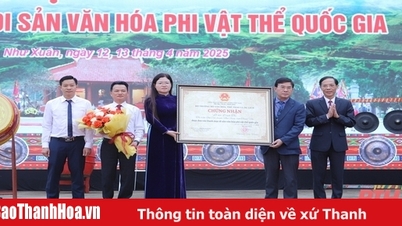



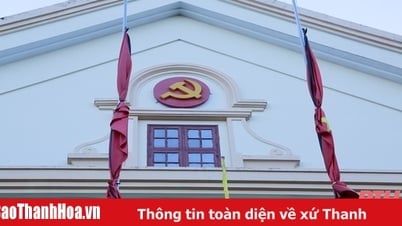


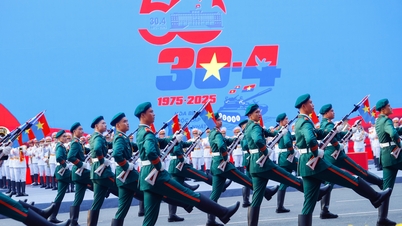

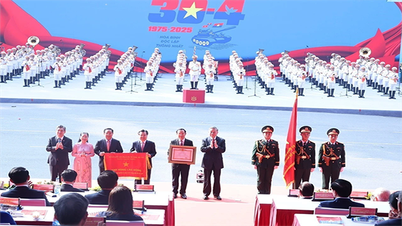

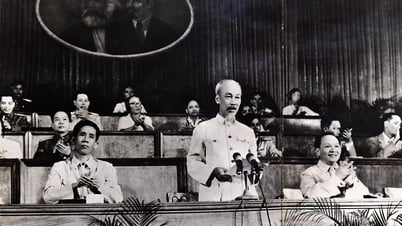




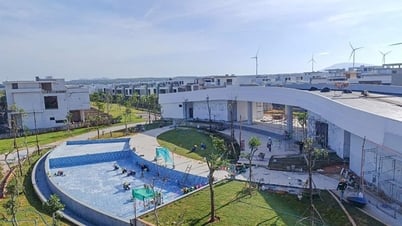


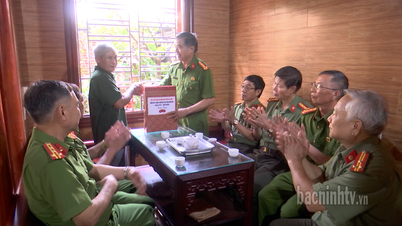
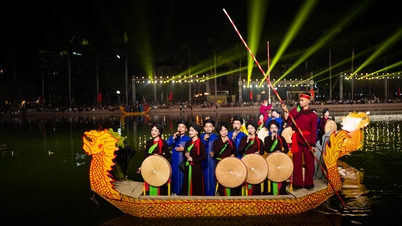

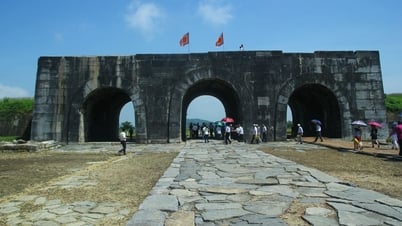



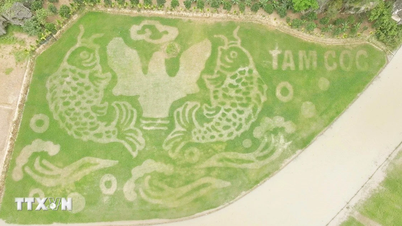









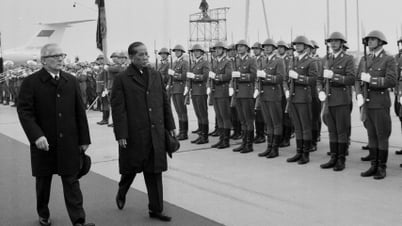

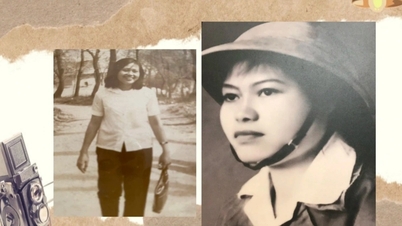
































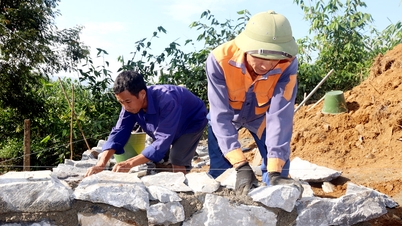

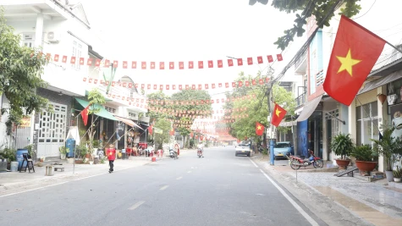





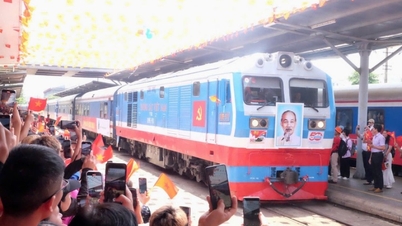












Comment (0)